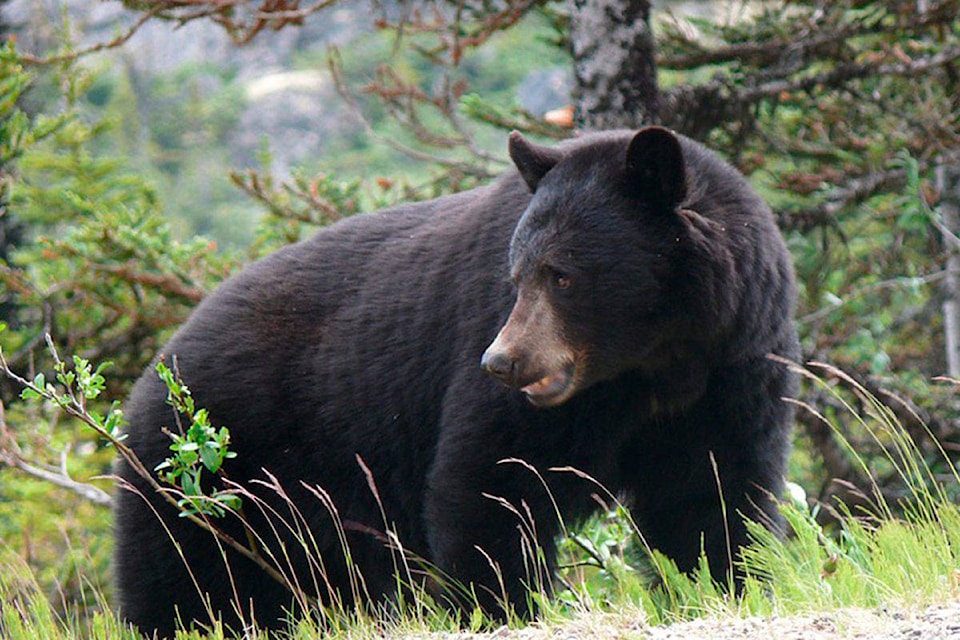One black bear seemed to have had its paws full on Monday morning, when it was spotted on the 13th hole at the Yellowknife Golf Course.
Kylie Frederick, the director of golf operations at the course, explained that they blocked off the back nine holes until the bear left on its own accord and it was safe to play again. But that wouldn't be the only bear spotted that day. Frederick said that someone else working at the site saw a bear when closing up shop.
"He saw it standing up by the garbage can," she said.
Also on Monday, Frederick said she contacted the Department of Environment and Climate Change (ECC) about the encounters, and that they sent staff by after the shop closed.
Julian Sabourin, a renewable resource officer with ECC, said while no bears were immediately spotted, a bear trap was set up and it will be monitored over the next couple of days. If the bear is caught, they'll likely relocate it, he explained.
"We would take the bear quite a ways down the highway, away from any communities and cabins here in the North," said Sabourin.
ECC hasn't had to relocate a bear so far this summer, according to Sabourin. He suggested that the increasing calls his department has been receiving about bears in and around Yellowknife are related to the seasons changing.
"We're almost in August, end of July. I think towards the end of the summer, bears really start focusing on putting on weight for the winter," he said. "Bears are already thinking about the upcoming winter months, and obviously it's very important for them to put on weight."
So, bears are following their noses, Sabourin said. There's even a specific berry that bears like, from the red osier dogwood, that gets ripe around now. Sometimes, their nose happens to lead them to civilization, Sabourin said.
Though ECC hasn't relocated any bears recently, they have had to kill one. It's a worst-case scenario, and an unfortunate reality, said Sabourin. However, the animal's body doesn't go to waste.
"It's brought back to do wildlife samples," Sabourin explained. "Typically, wildlife samples are taken and then it could be stored for future necropsies or training."
Sometimes, if a bear's corpse is in good condition, it can be given to the public.
"There have been times in my career where, if the bear was healthy, we've been able to give them to people if they want to keep the hide or of they want to keep the meat. It depends on what the bear's been doing," he said.
Every situation is different when it comes to a bear encounter. If anyone runs into a bear, Sabourin stressed not to turn tail and run, that just might trigger a predatory instinct in the bear.
Instead, speak calmly and walk away from the bear, he advised. It also helps to travel in groups and carry some form of repellent along the way, he added.

.png;w=120;h=80;mode=crop)

